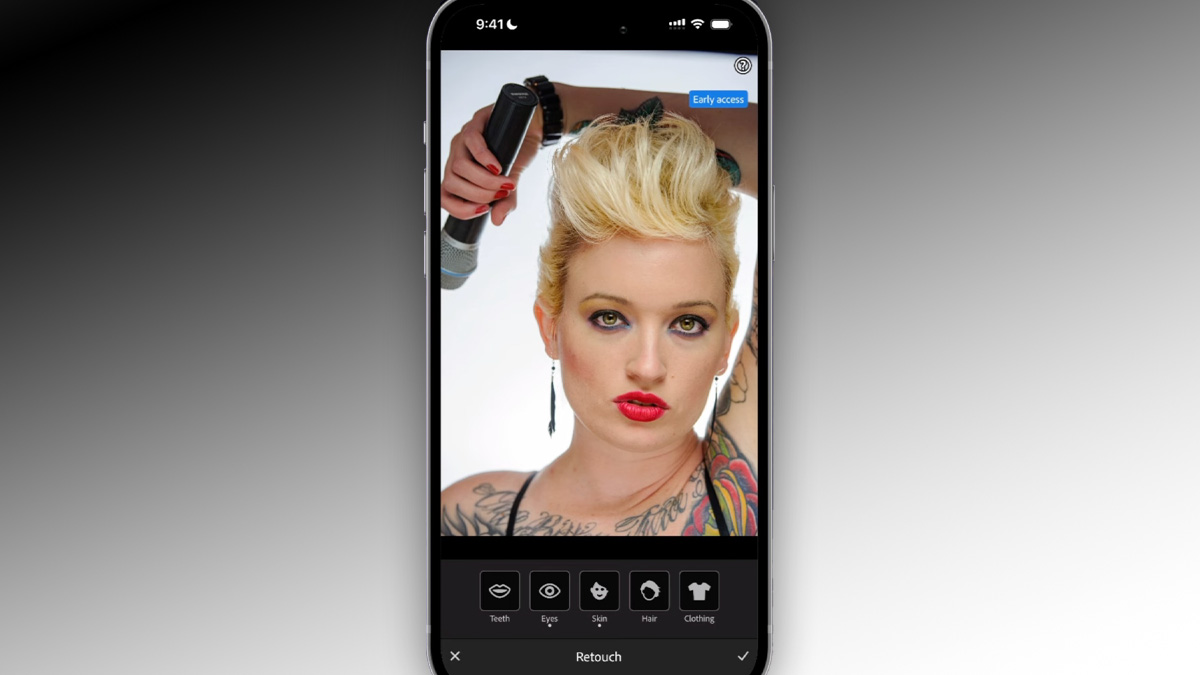Applying Content Credentials on Export
As part of the Adobe MAX release of Lightroom Classic and Lightroom we gained the ability to apply what Adobe is calling Content Credentials to copies on export. This is an Early Access feature, so expect changes as it evolves. What are Content Credentials? You can think of them as a special type of metadata that can strengthen the connection between you and your work shared online, which can either be embedded in the exported copy (JPG only right now), uploaded to Adobe’s content credential cloud (separate from the cloud storage used by Lightroom), or both. This is all completely optional, and you can also export copies without any of it too. Adobe has a great Content Credentials FAQ to learn more. To get started, select a photo for export, and click the Export button to open the Export dialog. Scroll down to the Content Credentials (Early Access) panel and click the Manage link. Note, if the panel is grayed out/inaccessible, go up to the File Settings panel and choose JPEG for the file type. This will take you to the page where you can connect your social media accounts to your credentials. When you return back to the Export dialog, click the Refresh button to update what is displayed in the Export dialog (Internet connection is required for the above to work). With that refreshed, you can now choose your storage method for how the content credential is connected to your work. There is also the option for Don’t Include for anytime you don’t want to do any of this. Then, use the checkboxes to mark the pieces of information you want to include with the credential. For example, if you connected your Instagram account in the Manage step earlier, you can check that box to have a link to your Instagram account included with the credential. That’s all there is to it. Then configure the rest of the Export dialog as you would normally and click Export to finish. I attached content credentials to this photo below. This was edited in Lightroom Classic’s Develop module after using the Denoise function to create a DNG copy with noise reduction. I also used the Generative Remove function to remove a bit of the lens flare from the sun. Adobe has an Inspect Tool that you can use to check the content credentials of photos. Right-click the photo above to download it and run it through the inspector tool to see what I mean. Here’s a snippet below from the Inspect results: I’m excited about the ability to strengthen the connection between our online work and ourselves as creators of that work. This is still incredibly early days in the development of this technology, and I don’t how widespread its adoption will be, but I am glad to see its inclusion in Lightroom Classic and Lightroom. Has anyone else used it? The post Applying Content Credentials on Export appeared first on Lightroom Killer Tips.
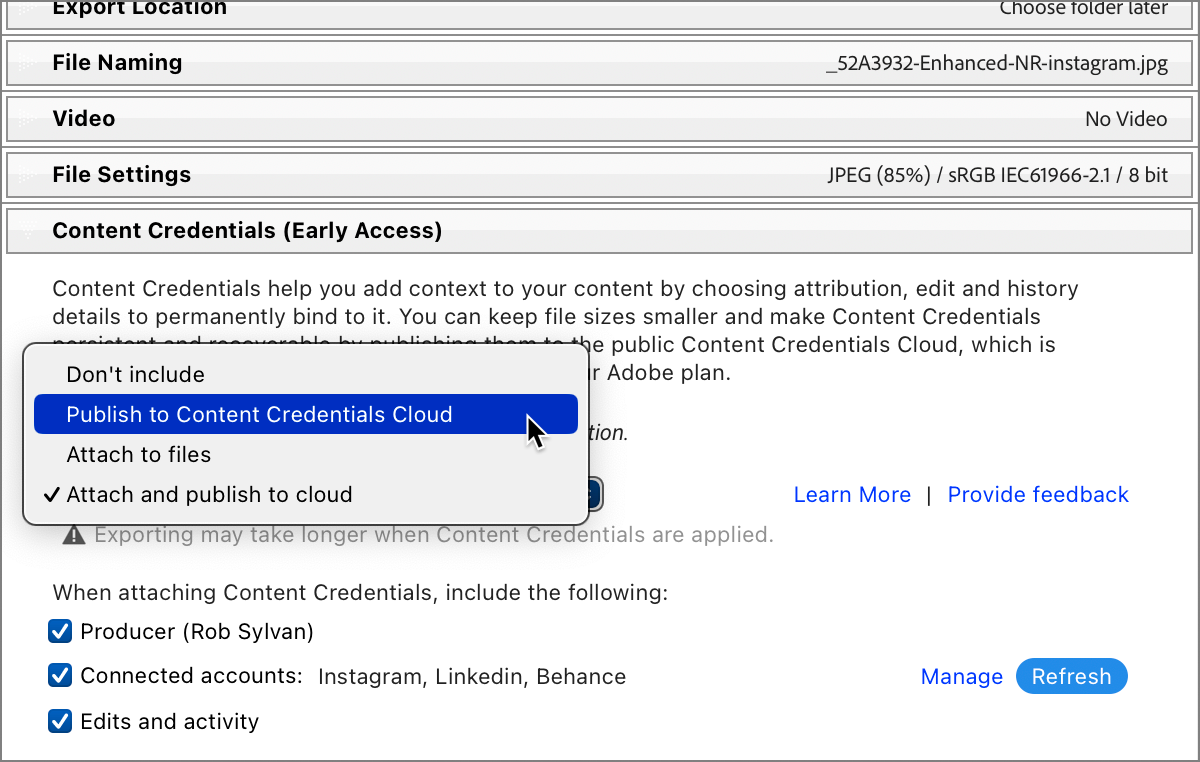
As part of the Adobe MAX release of Lightroom Classic and Lightroom we gained the ability to apply what Adobe is calling Content Credentials to copies on export. This is an Early Access feature, so expect changes as it evolves.
What are Content Credentials?
You can think of them as a special type of metadata that can strengthen the connection between you and your work shared online, which can either be embedded in the exported copy (JPG only right now), uploaded to Adobe’s content credential cloud (separate from the cloud storage used by Lightroom), or both. This is all completely optional, and you can also export copies without any of it too. Adobe has a great Content Credentials FAQ to learn more.
To get started, select a photo for export, and click the Export button to open the Export dialog. Scroll down to the Content Credentials (Early Access) panel and click the Manage link. Note, if the panel is grayed out/inaccessible, go up to the File Settings panel and choose JPEG for the file type.
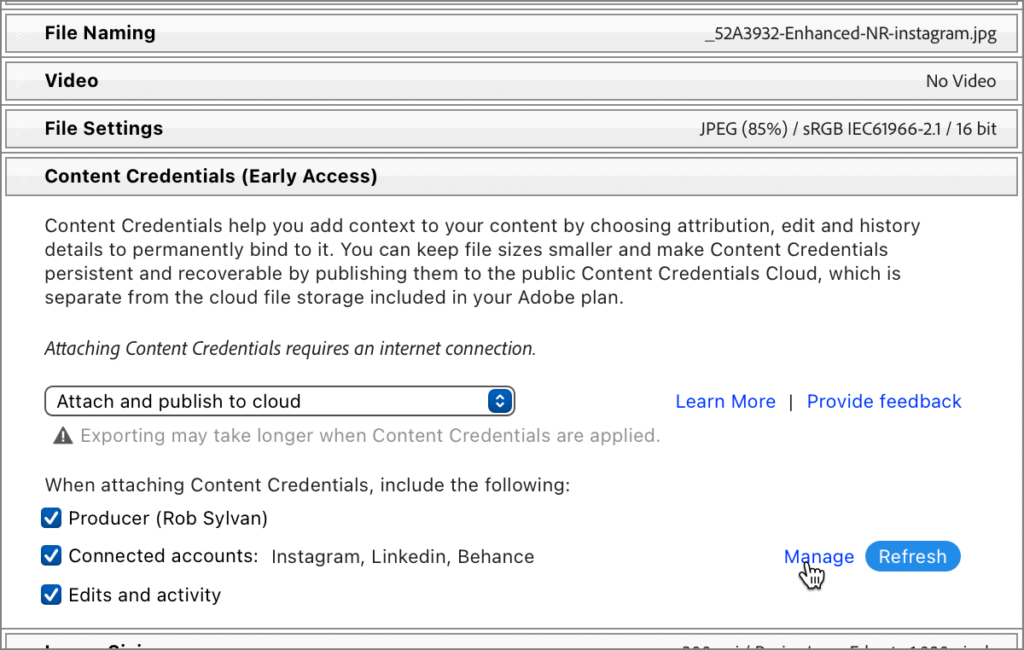
This will take you to the page where you can connect your social media accounts to your credentials.
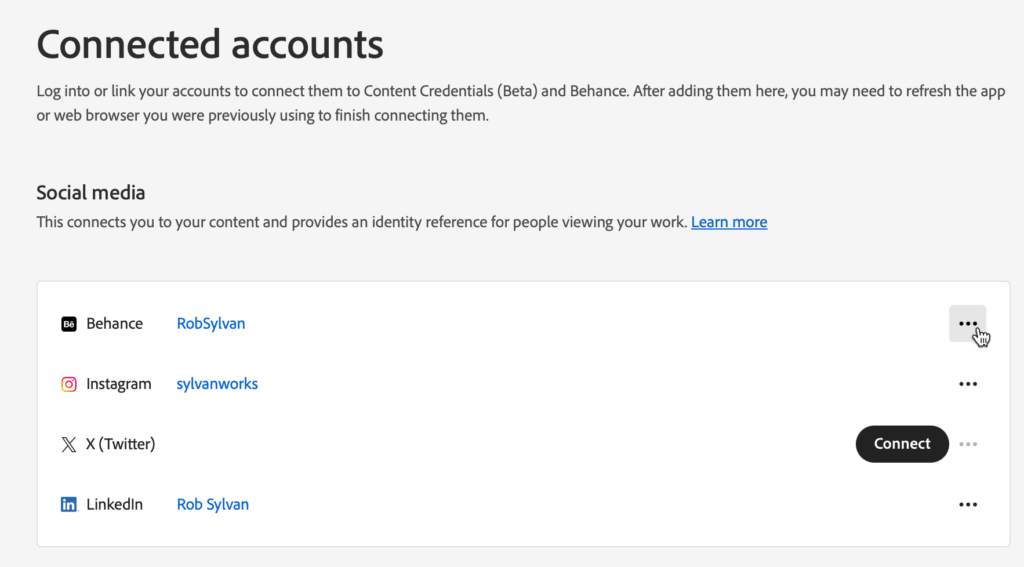
When you return back to the Export dialog, click the Refresh button to update what is displayed in the Export dialog (Internet connection is required for the above to work).
With that refreshed, you can now choose your storage method for how the content credential is connected to your work.
- Publish to Content Credentials Cloud: Keeps the exported file size smaller by storing the information in Adobe’s cloud (Internet connection required).
- Attach to files: Increased file size, but no need to upload to Adobe’s cloud.
- Attach and publish to cloud: The belt and suspenders approach that does both of the above.
There is also the option for Don’t Include for anytime you don’t want to do any of this.
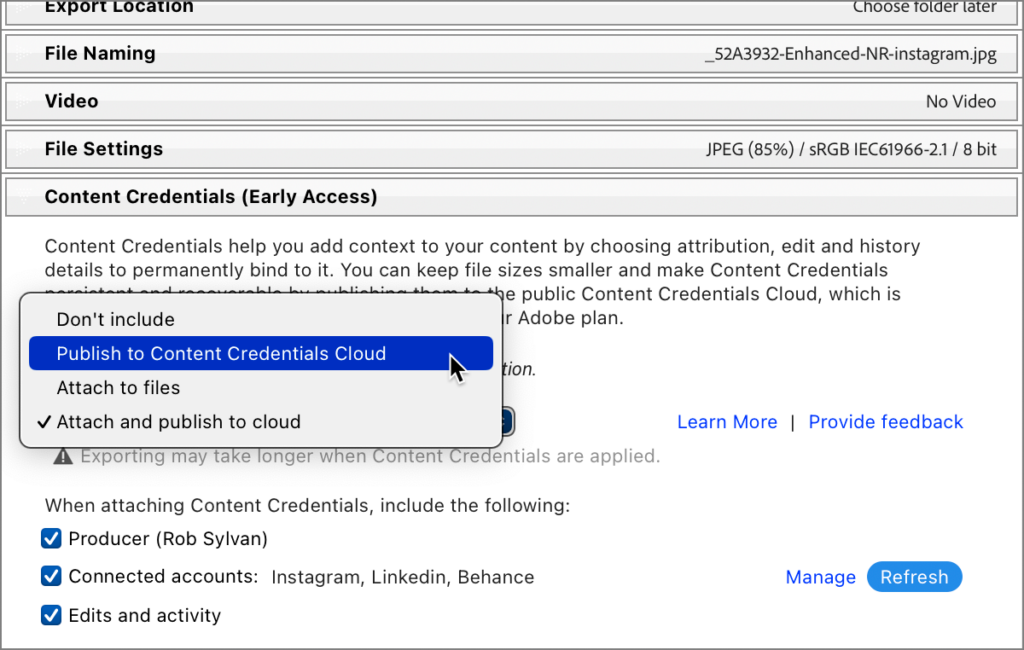
Then, use the checkboxes to mark the pieces of information you want to include with the credential. For example, if you connected your Instagram account in the Manage step earlier, you can check that box to have a link to your Instagram account included with the credential.
That’s all there is to it. Then configure the rest of the Export dialog as you would normally and click Export to finish.
I attached content credentials to this photo below. This was edited in Lightroom Classic’s Develop module after using the Denoise function to create a DNG copy with noise reduction. I also used the Generative Remove function to remove a bit of the lens flare from the sun.

Adobe has an Inspect Tool that you can use to check the content credentials of photos. Right-click the photo above to download it and run it through the inspector tool to see what I mean. Here’s a snippet below from the Inspect results:
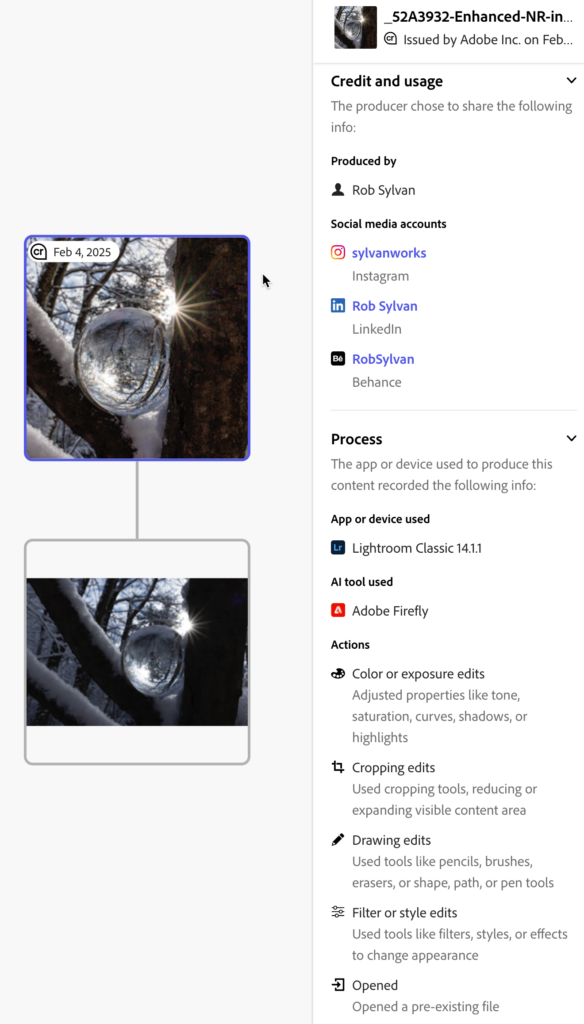
I’m excited about the ability to strengthen the connection between our online work and ourselves as creators of that work. This is still incredibly early days in the development of this technology, and I don’t how widespread its adoption will be, but I am glad to see its inclusion in Lightroom Classic and Lightroom. Has anyone else used it?
The post Applying Content Credentials on Export appeared first on Lightroom Killer Tips.






































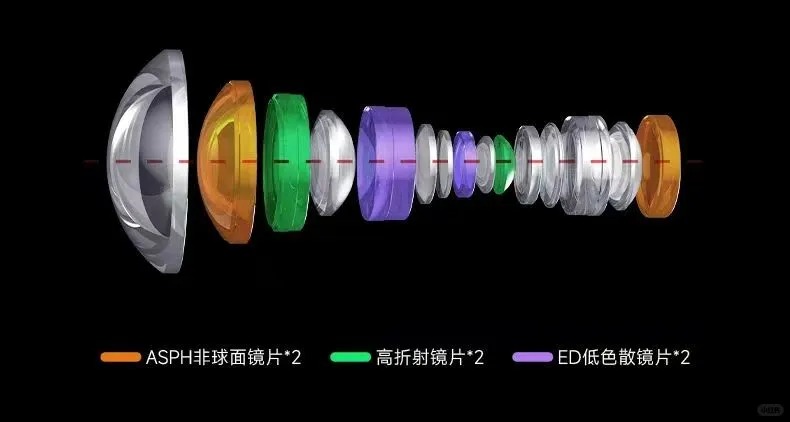

















![Ultimate Blue Lock: Rivals Flow Guide and Tier List [IGAGURI] – All Flows & Their Buffs](https://www.destructoid.com/wp-content/uploads/2025/03/flow-tier-list-and-guide-blue-lock-rivals.png?quality=75)









































































































































































































